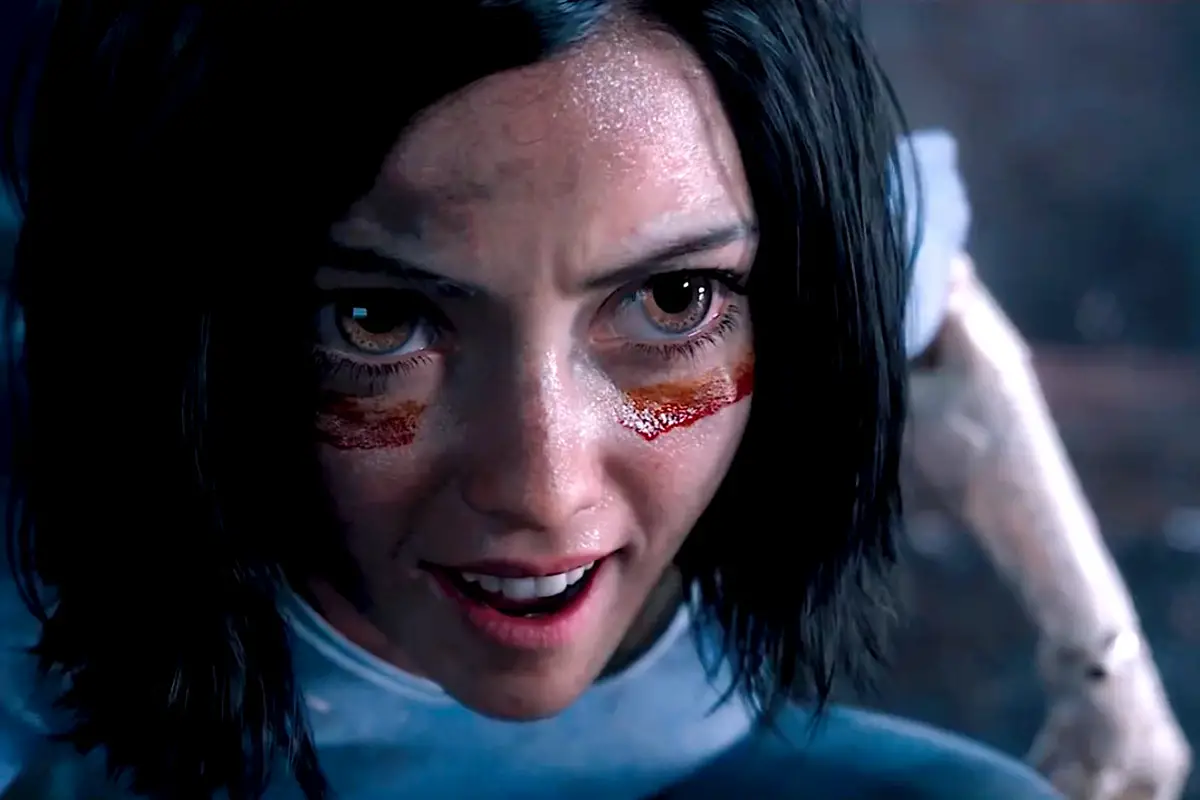On Feb. 14, “Alita: Battle Angel” sprung into theaters, making a cool $28.5 million its opening weekend at the box office. The latest cyberpunk action film was directed by Robert Rodriguez but written and produced by James Cameron, the mastermind behind “Avatar” and “The Terminator” series. But even with its elite production team and breathtaking visual effects, the weak screenplay of “Alita: Battle Angel” failed to impress critics.
The movie tells the story of Alita (Rosa Salazar), a female cyborg who gets rescued by scientist Dr. Dyson Ido (Christoph Waltz). One night, Alita discovers that Ido is a hunter-warrior, and while following him Alita sees him get hurt, steps in to save him and rediscovers her martial arts skills. Afterward, emboldened by her battle abilities, she decides to become a bounty hunter like Ido.
But after a day with her newfound friend, Hugo (Keean Johnson), Alita is introduced to Motorball, a race where cyborgs fight to the death. She is transformed from an innocent teenager into a cold-blooded cyborg killer, all in a matter of days. The rest of the movie follows Alita as she prepares for the Motorball tournament, trying to stay alive while other Motorball competitors develop vendettas against the young protagonist.
The main villain Alita battles is Zapan (Ed Skrein), along with the businessman Vector (Mahershala Ali), who rigs the tournament. The movie also features Jennifer Connelly as Dr. Chiren, Ido’s ex-wife and the woman who engineers Alita and Hugo back to life.
Audiences were quick to applaud Cameron’s strong female lead, but the film showcases flaws typical of stories exploring female self-empowerment. For instance, despite Alita’s girl-boss tendencies, her relationship with Hugo plays off some pretty retrograde tropes: She ends up falling for him because he’s the first guy who is willing to help her. Despite this minor flaw, Alita does manage to show her agency in other ways, especially when fighting against Zapan.
Indeed, Salazar’s character represents a new, more robust iteration of the increasingly prevalent female action hero. Her character arc is dynamic and therefore realistic, as the film’s progress finds her slowly discovering who she wants to be. She believes in the best in people and holds a certain innocence, but grows fierce when angry. She is a mix of emotions but that’s what makes her human, despite the nature of her body.
While “Alita” has received accolades for its strong female lead, that’s not the main reason the film has attracted public praise. Instead, the effortless transitions between computer-generated imagery and real performance have been the movie’s real stars, as Rodriguez’s innovative filmmaking has turned the action saga into an envelope-pushing work of CGI cinematography.
Even though “Alita: Battle Angel” was filmed in Austin, most of the visual effects work was done by companies abroad: Weta Digital, DNEG and Framestore. Each VFX house had different responsibilities for the film, but Weta Digital focused mainly on creating Alita’s virtual facial features.
Using a process called photo capture, cameras were placed all around the set and recorded markers placed on Salazar while she was acting. The markers, her movements, were then translated into a virtual 3D model, making her data easier to manipulate during the post-production process. The CGI model of Alita cast more light on her skin and amplified other facial features, like her eyes and nose, which made Salazar look more like the character the manga series creator, Yukito Kishiro, had in mind.
Along with Weta Digital, DNEG worked on the animation of cyborg characters and created models for the city of Zalem, but Framestore developed the finer details.
Framestore worked on the project for over six months, building the setting, adding lights and creating the over 300 assets, or moving pieces, featured in the film. The British visual effects company also worked on the Motorball tournament sequences, using animation to create the audience and arena.
Special effects are the film’s primary strength, but it took years to get the process started; indeed, “Alita: Battle Angel” is a film 20 years in the making. From the start, Cameron and producer Jon Landau knew they wanted to work with Weta Digital to create this movie, especially because “Avatar” was such a huge success. Weta Digital accomplished what many visual-effects specialists have been trying to do for their whole careers: making audiences question whether they were looking at actual skin or CGI.
Artfully incorporated CGI is one of the reasons “Alita: Battle Angel” is popular, in addition to being praised as one of the best anime adaptations ever. But especially for those who don’t read manga or watch anime, the main appeal of the film is the striking visual effects — that’s why I went to see the film. Although the movie has done fairly well in the box office since its release, “Alita” is anticipated to be even more successful.
A week after the film came out in the states, it premiered in China, making $65 million its opening weekend, surpassing Warner Brothers’ sci-fi flick “Ready Player One.”
“Alita: Battle Angel” is a different kind of hero film; it’s an entertaining and visually stunning global success, reaching almost $266 million in sales. The movie may seem like a science-fiction film on the surface, but it’s more than that. Most action movies lack emotion, while most dramatic movies leave you wanting more thrilling moments. Conversely, “Alita” has well-choreographed action scenes that are fueled by confused emotions, creating a dramatic action movie that just happens to take place in a science fiction world.
“Alita: Battle Angel” is the kind of movie that intrigues you with its looks, then makes you desperate for what’s under the mind-blowing surface.
















